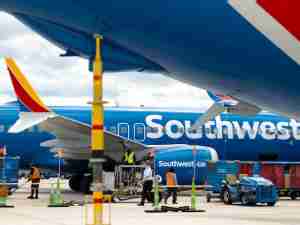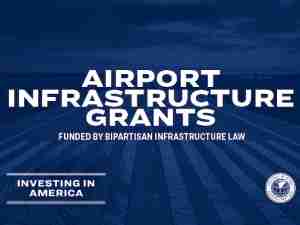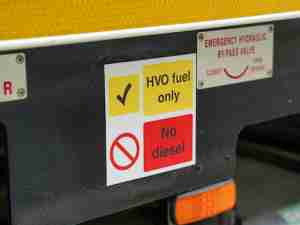Fitch Ratings has upgraded approximately $1.3 billion of outstanding Broward County, FL airport system revenue bonds issued on behalf of Fort Lauderdale-Hollywood International Airport (FLL) to 'A+' from 'A'. The Rating Outlook is revised to Stable from Positive.
The upgrade reflects continued favorable trends in enplanement growth, supported by expansion in both domestic and international services, combined with stable debt service coverage ratios (DSCR) and long-term moderate leverage following an initial elevated period during the current capital program period. Fort Lauderdale-Hollywood International Airport's (FLL) has demonstrated advanced progression in its $3.2 billion multi-year capital program, covering essential airfield and terminal projects, which collectively provides for longer term capacity for future growth. Further, strong performance in non-airline revenues and traffic allows FLL to maintain regionally competitive airline costs.
KEY RATING DRIVERS
The rating reflects FLL's strong traffic base and demand that is supported by high carrier diversification and expanding domestic and international services. Though FLL faces regional competition from airports in nearby Miami and Palm Beach, the airport is well anchored by the domestic origin and destination (O&D) market, and has recently experienced significant growth in the international market. The airport's cost structure is under a long term fully residual agreement, supporting full cost recovery and stable coverage averaging 1.4x under Fitch's rating case. Airport leverage has increased in recent years to support the large capital program but while peaking at 11x, airport leverage is expected to evolve to below 9x by 2021. Cost per enplanement (CPE) has historically been very low but will measurably rise in the near term with new debt, potentially reaching $13 in Fitch's rating case, but is balanced by FLL's strong position relative to other South Florida airports and the expectation of continued performance and growth.
Growing Traffic, Carrier Diversification (Revenue Risk - Volume: Stronger
FLL is the leading domestic O&D airport for South Florida with over 14 million enplanements in fiscal 2016 followed by further growth of 10% in nine months fiscal year-to-date (YTD) 2017. Carrier service is well-diversified across many low-cost carriers. Some vulnerability to traffic volatility exists given the leisure-oriented market FLL serves; however, passenger trends are largely positive particularly with international destinations going through a major expansionary phase. Competition exists from both Miami and Palm Beach airports, though FLL continues to expand and controls over half of the region's domestic O&D market.
Fully Residual Rate-Setting Structure (Revenue Risk - Price: Stronger)
The airport currently utilizes a residual use agreement which expires in 2026. This contract period demonstrates the commitment from carriers, as fixed costs for the airport are rising in conjunction with the capital program borrowings. Current airline cost per enplanement is relatively low, and while CPE may rise under Fitch's cases, Fitch believes that the airport has sufficient economic flexibility to pass costs to airlines despite the large presence of low-cost carriers.
Significant Capital Spending Underway (Infrastructure Development & Renewal: Midrange)
The ongoing expansion of the airport's runways, terminal redevelopments and renovations, and various other projects will come at a sizeable cost of $3.2 billion through 2022. Taking into account prior bond issuances, over half of these costs are already funded, with additional debt issuances anticipated to finance remaining projects. Other funding sources include passenger facility charges (PFCs), grants and airport revenues. A large portion of the plan (primarily terminal projects) is currently underway, with the majority under budget and on track to be completed in the next few years.
Conservative Debt Structure (Debt Structure: Stronger)
The airport's current debt structure is senior, fixed-rate with a flat-to-declining amortization profile, secured by a first lien on general airport revenue. Even with the addition of anticipated debt issuances, FLL's overall debt service profile is expected to be manageable. Airport covenants and reserve requirements are comparable to many U.S. airports.
Financial Profile
Due to the residual airline agreement, the airport is expected to maintain stable debt coverage levels close to 1.4x on average under Fitch's rating case. Historical liquidity levels have been adequate averaging nearly one year of operating costs. With the anticipation of additional debt, airport leverage is expected to rise in the near term, averaging 10.5x in the rating case, but should evolve below 9.0x by 2021. Airline CPE will likely become elevated in later years as debt service and operating expenses related to new capital facilities increase, but remain just over $10 on average.
PEER GROUP
FLL's peers include Miami (MIA; A/Stable) and Tampa (TPA; AA-/A+/Stable). Miami's current CPE and leverage are less favourable relative to FLL, at nearly $20 and 12.1x, respectively. Tampa has comparable CPE levels around $5, but stronger coverage at 1.7x and much lower leverage of just over 4.0x. FLL controls 52% of the South Florida O&D market share, while its international market share has consecutively grown over the last three years.
RATING SENSITIVITIES
Future Developments That May, Individually or Collectively, Lead to Negative Rating Action:
- Material enplanement declines or elevated traffic volatility;
- Significant additional borrowing beyond the airport's current plan leading to leverage to remain at or above 12x on a sustained basis.
Future Developments That May, Individually or Collectively, Lead to Positive Rating Action:
- Successful completion of the airport's capital program within budget
- Declining airport leverage at below the 8x range on a sustained basis supported by continued enplanement growth and revenue generation.
CREDIT UPDATE
Performance Update
Total traffic grew for the seventh consecutive year in FY2016, growing 8.6% to 14.4 million enplanements as both domestic (79% of total) and international (21% of total) traffic increased. Nine month YTD 2017 traffic through June is up 10%. Traffic growth in recent years is driven by the area's population growth, improving economy, and efforts to grow the airport's international flight services.
At the end of each year, airline rates and charges are adjusted and any excess airline revenues are carried over to following fiscal year. Fates and charges for 2015 were originally based on conservative assumptions of airline activity, resulting in excess funds generated at year-end and carried over to 2016. Although gross earned airline revenue saw an increase in 2016, net year-end airline revenue decreased 26.6% due to the adjustments and returned back to typical levels. Non-airline revenues grew 7.4% as enplanement-based sources increased from heightened volume. Overall, total operating revenues (net of airline revenue adjustments) fell 4% to $221.5 million, driven by the year-end airline revenue adjustment. Total operating expenses increased 4% to $140.9 million (excluding GASB 68 pension adjustment) in 2016, primarily driven by growth in salaries & wages due to increased headcount and benefit costs, and contractual services for parking management, ground transportation management, janitorial and other maintenance services, and shuttle services. Contractual service cost is the airport's largest expense, making up 32% of 2016 expenses.
The airport's current ongoing capital improvement plan (CIP) through 2022 totals $3.2 billion, of which more than half is already completed. 33% of the plan is dedicated to airfield projects, 56% to terminal projects, and the remainder for other miscellaneous projects. The CIP is funded by a combination of existing bond funds (51%), new debt (25%), PFCs (12%), state and federal grant monies (10%), and airport cash (2%). Major projects include the expansion of the airport's South Runway, replacement of Terminal 4 gates, terminal modernization and renovations, new in-line baggage handling systems, expanded FIS facilities, concourse construction, and a noise mitigation program that offers sound-proofing for eligible homes near the airport. A large portion of the plan (primarily terminal projects) is currently underway, with the majority under budget and on track to be completed in the next few years. The airport is currently in process of issuing approximately $325 million in series 2017 revenue bonds to help fund their CIP, and expects to close sometime in November 2017 (Fitch was not asked to rate this debt). Additional issuances estimated at $471.5 million and $174.2 million are expected in 2018 and 2019, respectively. The anticipated issuances will also help to finance the capital plan.
Indenture coverage (with PFCs as offsets to debt service) was strong growing to 1.8x in 2016 from 1.7x the prior year. In 2016, Fitch-calculated DSCR (with PFCs as revenues) was 1.4x, similar to FY2015. 2016 leverage increased to 10.4x from 8.0x in 2015 due to a new debt issuance that year. Given the increase in enplanements and an adjusted reduction in airline revenue, 2016 CPE decreased to a very competitive $3.94 from $5.84 in 2015. The airport's liquidity position also improved, growing to just over 400 DCOH, compared to 365 DCOH in 2015.
Fitch Cases
Fitch's base case utilized the sponsor forecast, which incorporates anticipated debt issuances mentioned above. Non-airline revenues are set to growth with enplanements, and expense forecasts are considered conservative. Near-term airline revenues are expected to increase significantly due to the heightened costs associated with opening new terminal facilities and the added debt service from planned issuances. Airline revenues are adjusted to meet minimum coverage levels per the fully residual AUL averaging 1.4x, while net debt-to-cash flow available for debt service (CFADS) reaches 8.7x by 2022, and CPE average $9.47.
Fitch's rating case assumes a 5% enplanement stress in FY2018, followed by 1% growth in 2019 and 4% annual recovery through 2022. Thereafter, traffic grows at base case levels. Cost management is credited in stress years, but expenses become elevated 0.5% above the base case thereafter. Based on the residual nature of the AUL, coverage is again assumed to remain level and averages 1.4x. Leverage reaches 8.8x by 2022, and average CPE is slightly elevated at $10.09.
Security
The bonds are payable from the net revenue of the airport's operations. PFCs are not pledged by the bond resolution as a source of security of or payment for the bonds but have been irrevocably committed as available revenue to the payment of debt service on various issues.









